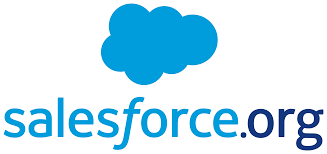Placing Donors Front and Center

New technologies and the connectivity they offer can provide organizations with a fuller view of the people who support them, and increase their chances of fundraising success.
As nonprofits work to find new angles to engage would-be donors, many are asking several questions about how they can improve their fundraising approaches, including: What can we gain by examining donors more closely? What makes each donor unique? And how can a greater base of knowledge about those who give the money that sustains an organization result in more targeted and effective campaigns?
Nonprofits that have begun to turn toward rapidly emerging fundraising-focused technologies have found some compelling answers.
Consider the case of UNHCR, the refugee agency of the United Nations. Each year, the organization must raise a considerable sum of money from private sources to aid the tens of millions of people worldwide who have been forcibly displaced from their homelands.
Governments pay about half of the $8.6 billion (in U.S. dollars) UNHCR needs to operate each year, but those contributions aren’t enough to support all the work the organization does. In order to fund some programs, including one designed to help refugees obtain basic needs, such as food, shelter, and water, and another that allows donors to send cash directly to individual families, the agency has brought in $450 million this year. It hopes to more than double that amount to $1 billion by 2025.
A few years ago, as it considered how to attain that level of support, UNHCR realized it needed to make quantum changes in how it raises charitable dollars. Most crucially, UNHCR needed to better understand who its donors are, where they live, and what kinds of programs they prefer to get behind. The organization decided it should engage its donors more regularly, communicate with them only via the method they prefer, and connect each one of them with a UNHCR fundraising employee.
To check all those boxes, UNHCR made a commitment to fully invest in technology platforms, networking apps, and the cloud—all tools that have since increased the organization’s ability to raise money by deepening its donor knowledge base.
Using several cloud-connected tools, UNHCR now personalizes its approach, using an assortment of newly available data to more clearly show donors the difference each gift makes in the lives of the world’s refugees.
“We can now take donors on a journey that allows us to develop a relationship with them,” says Hussein Fakih, digital fundraising officer at UNHCR.


Before the development of customer relationship management systems (CRM) and other integral technologies, UNHCR followed the path of most other nonprofit groups. A typical donor would make a single one-time gift, and then receive little in the way of communication from an organization.
“Often, they had had an emotional response to a campaign. To us, it looked like little more than a transaction. We accepted their donation and marked it down in its books—and couldn’t do much else,” says Fakih. “Now, we’re able to turn that gift into a longer conversation—a relationship that can lead to even more gifts.”
UNHCR now uses artificial intelligence tools that can give it predictive data about donors, such as which ones might be interested in certain global issues or fundraising campaigns. It uses various platforms to send and receive notes, texts, emails, or other messages from donors.
The organization has also expanded its use of the cloud, thanks to a longtime partner, Salesforce.org.
UNHCR augmented the Salesforce customer relationship management system platform it has long used, going all in on Salesforce.org’s Nonprofit Success Pack, which helps it better manage relations with donors and mine their personal data. It has also plugged into the company’s Sales Cloud and Service Cloud, products that help it reach more people and earmark more money for countries in need. In the past year, UNHCR has increased the ranks of its donors by 10 percent.
To make nonprofits more effective, Salesforce.org maintains a goal to make fundraising consistent across an organization’s various outposts, as well as knock down walls between all of the teams that contribute to fundraising success, says David Ragones, Senior Vice President and General Manager of the Nonprofit Cloud at Salesforce.
Technologies the company is now just rolling out will further help organizations streamline their efforts across campaigns and teams, he adds.
“Our goal is to help organizations bring their online and offline worlds together. Ultimately, that will make their fundraising more effective,” Ragones says.
A new fundraising suite of products will provide a single integrated solution for nonprofits, Ragones adds. The Salesforce.org Insights Platform will help nonprofits improve their grasp of household data, highlight areas where they can raise more money, and engage with powerful segmentation in direct mail and digital channels.
This enhanced data helps engage donors, Ragones says. “That data can be used to connect in smart ways, such as communicating the right ask amount through email to our new Giving Pages, or through older channels like direct mail. And when checks and pledges roll in, they are easy to upload or enter in batch with new capabilities in the Nonprofit Success Pack to capture and relate trusted data,” he adds.
Salesforce.org makes tools available at a reasonable price to nonprofits, offering up to 10 tech licenses for free. The company does so to provide solutions to all nonprofit challenges, but most often to resolve fundraising problems that nonprofit leaders have identified directly or in their responses to Salesforce.org’s 2019 Fundraising Productivity Report.


Only about a quarter of organizations believe that their fundraising data is strong, with less than half reporting that their marketing teams share the same CRM as fundraisers.
UNHCR, which raises money in more than 30 countries, has wasted less effort and money and discovered more value by using its new tools. For one thing, new tech has allowed the organization to expand its fundraising footprint.
“New technologies make it easier for us to roll out campaigns in new countries,” says Jesse Hoosemans, a solution architect at UNHCR. That’s important, because the first relief organization to start a crisis-focused campaign is the group that seizes the moment--and is most likely to run a successful campaign. “It gives us a leg up, a chance to become the most successful fundraiser in a market.”
What’s more, the same tools that show UNHCR the small picture—one of the individual donor—also allows the organization to see the bigger one.
“Having this tech capability helps us plan our campaigns, forecast how many people we will be able to reach, and see what’s working and what isn’t in real time,” Hoosemans adds.
UNHCR has only begun to build out its tech capabilities. The organization plans to erect a “digital wall” of letters from its donors, a web page that anyone with Internet access can read.
Already, the change in approach toward donors has opened up a strong line of communication—one that demonstrates how much closer UNHCR is to the people who support it.
“At the end of the day, a lot of the things we deal with are very sad things,” says Fakih. “But the beautiful handwritten notes, texts, emails, and videos donors send us let us know that we’re reaching them, that they understand what we do. We’re learning that relationships are very important, and it is as important to have a donor as it is a donation.”
Want more fundraising inspiration? Download Salesforce.org’s Donor-Centric Fundraising Guide for tips on exceeding donor expectations through technology.


